Butterfly cakes (aka butterfly buns) are quick and easy to make and often make an appearance at children’s birthday parties. Their eternal popularity is down to their kid-friendly dainty size and retro cute styling. I mean, who can seriously resist a cake with wings?
They look grand on a table with a plate of fairy cakes to keep them company.
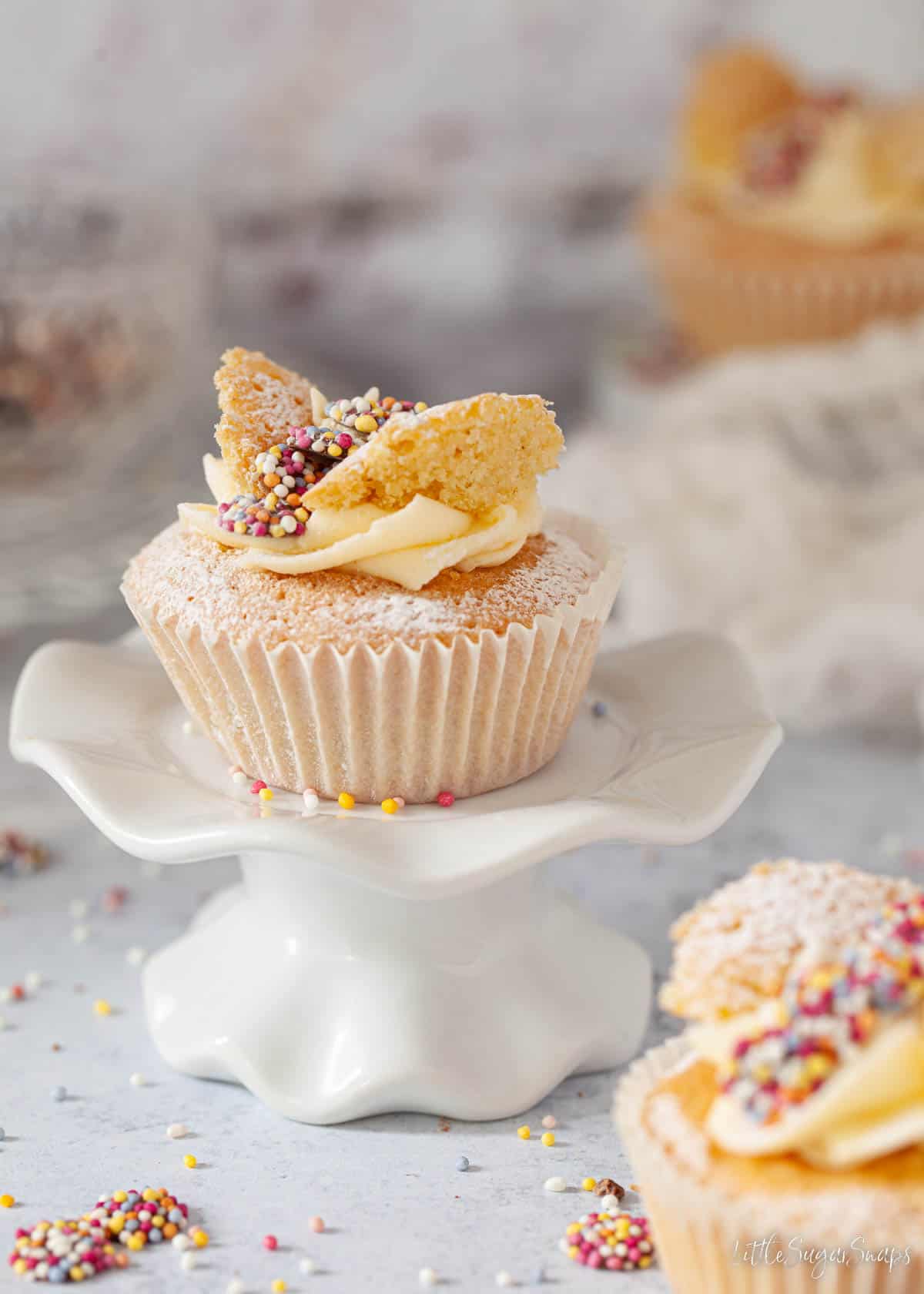
Want to Save This Recipe?
Jump to:
Hands up if you remember eating butterfly cakes as a small child? They featured heavily when I was growing up. They ticked all the boxes for me – small, cute, prettily decorated and full of feminine charm.
Truthfully, my Mum has never transitioned from butterfly cakes and fairy cakes to cupcakes, preferring instead the charm that these two classic buns exude over the often garish decor of cupcakes. I can’t knock her opinion there.
As for me, when it comes to cakes, I like a plentiful variety. But there’s something particularly endearing about classic British butterfly cakes that really pulls at my heartstrings. Memories of a happy home life throughout my childhood and Mum ensuring that my birthday parties were always well-catered for jollies must be behind this twang of my strings.
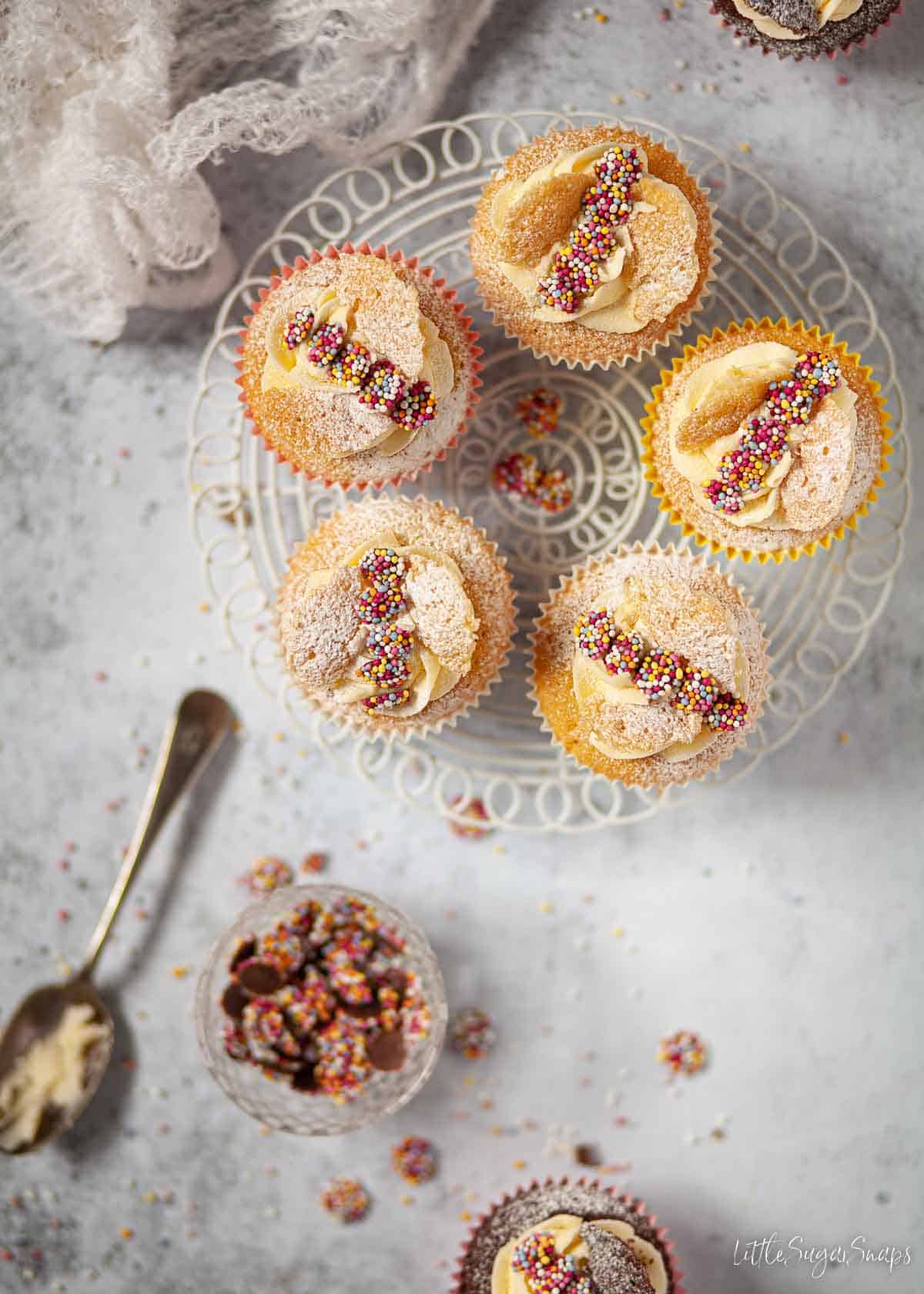
Looking for more kid-friendly small cakes? Try my hot chocolate cupcakes or my Harry Potter cupcakes.
Why you’ll love these small cakes
- The recipe is quick and simple.
- It produces light and fluffy cakes.
- And these butterfly buns are really quite pretty.
- The mixture goes a long way – expect to make at least 12 cakes from your batter.
- They can be filled with buttercream or cream.
- And they can be adorned with or without jam.
- Decorations can be kept simple for kids or turned fancy to appeal to adults.
- The size of these cakes is child-friendly.
- And children will love helping to make these easy butterfly cakes.
What are butterfly cakes?
A butterfly cake is a variation of the classic fairy cake. It is a petite cake that is cut and decorated to look like the wings of a butterfly:
- A circle is cut from the top of the cake and sliced in half.
- The hole left behind in the cake is filled with buttercream.
- And the two small pieces of the removed cake are placed onto the filling to resemble butterfly wings.
- Sprinkles and/or sweets are sometimes placed in the centre of the cake.
- Icing sugar is often used to dredge them.
Rather like fairy cakes, the flavour of these small butterfly buns should be classic. Original recipes don’t even include vanilla extract. Think along the lines of chocolate butterfly cakes or perhaps orange or lemon butterfly cakes.
These cakes are very popular at children’s birthday parties. Rather like the fairy cake, they are a classic bake that has stood the test of time because most people find a simple butterfly cake hard to resist.
Ingredients notes
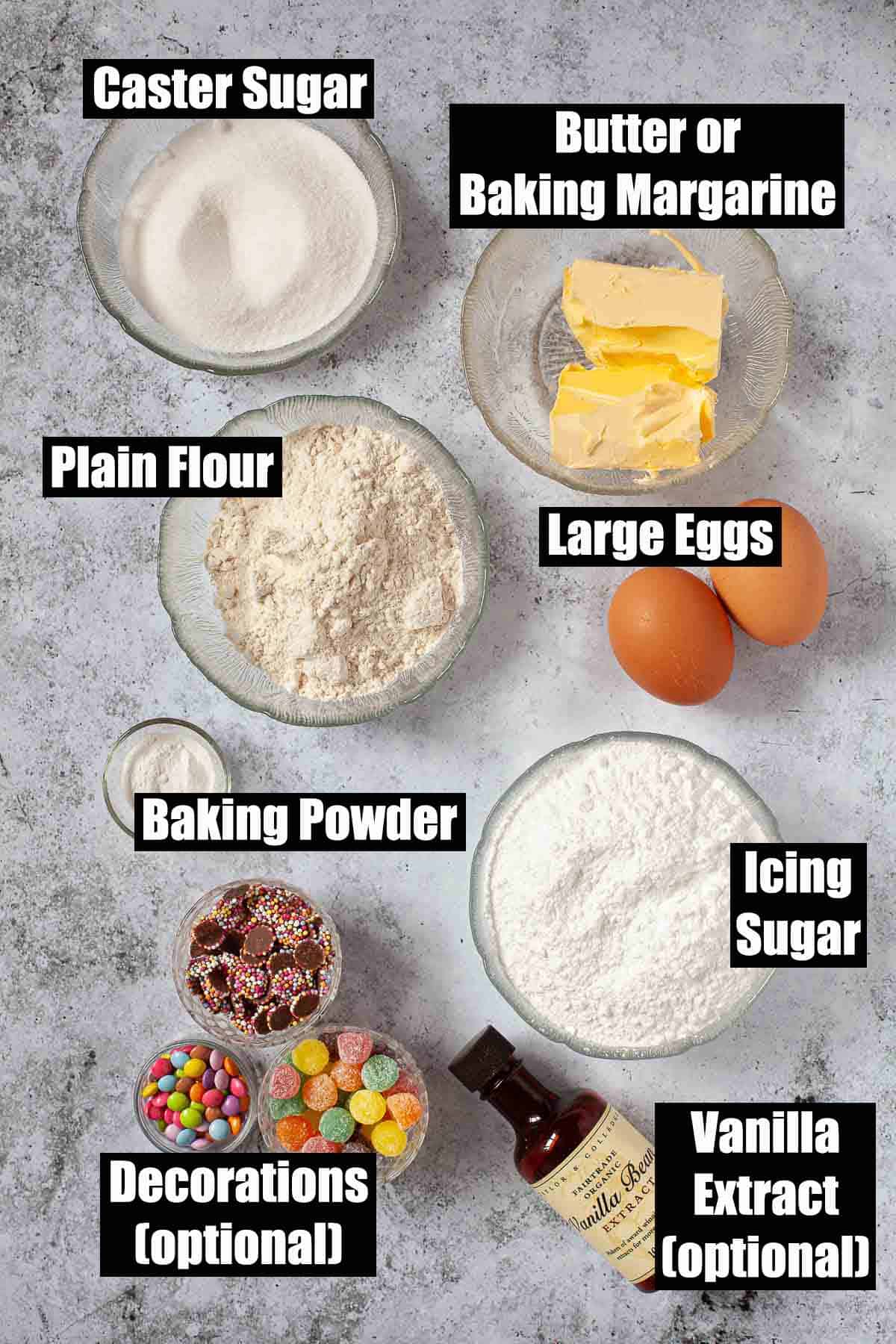
Butter/ baking margarine: whether you prefer to use butter or baking margarine when baking cakes, do ensure it is at room temperature. Not only will it be easier to cream with the sugar but the batter will be less likely to split.
Use only butter for the buttercream (the clue is in the name). Frosting made with butter is so much tastier than that made with margarine.
Eggs: use large eggs to produce cake batter with a soft dropping consistency that bakes into light, soft and fluffy little butterfly buns. If your eggs are small, add a dash of milk if your batter is too thick.
Sugar: white caster sugar is the best option to use here. It has a neutral taste and a fine texture ideally suited to cake baking.
Vanilla extract/ vanilla bean paste: traditional recipes do not list vanilla as an ingredient. However, vanilla butterfly cakes really are a delight.
Plain flour and baking powder: this recipe lists both plain flour and baking powder as ingredients. Self-raising flour can be used instead. In this instance, omit the baking powder.
Step by step instructions
Make the cakes
- Use electric beaters to cream the butter and sugar together until pale and fluffy.
- Add the vanilla (if using), 1 egg and a spoonful of flour. Beat well.
- Beat in the second egg.
- Sieve the remaining flour and baking powder into the bowl and beat until just combined.
- The batter should have a soft dropping consistency. If it is too thick add ½-1 tablespoon of milk to loosen it.
- Divide the batter between the paper cases. Fill 12 first and then use any leftover batter to create a few extras (the exact number of cakes made depends on the size of the paper cases used).
- Bake for 15-18 minutes until well risen and golden.
- Lift the paper cases out of the bun tin and let cool on a wire rack.
Make the buttercream
- Beat the butter with the vanilla extract into soft and smooth.
- Add the icing sugar a spoonful at a time, beating well between each addition.
Assemble the cakes
- When cold, cut a shallow circle from the top of each cake and cut this piece in half.
- Fill the hole in the butterfly cakes with buttercream.
- Poke the two small pieces of cake into the buttercream to resemble butterfly wings.
- Press sweets and cake decorations into the buttercream.
- Dredge with icing sugar before serving.
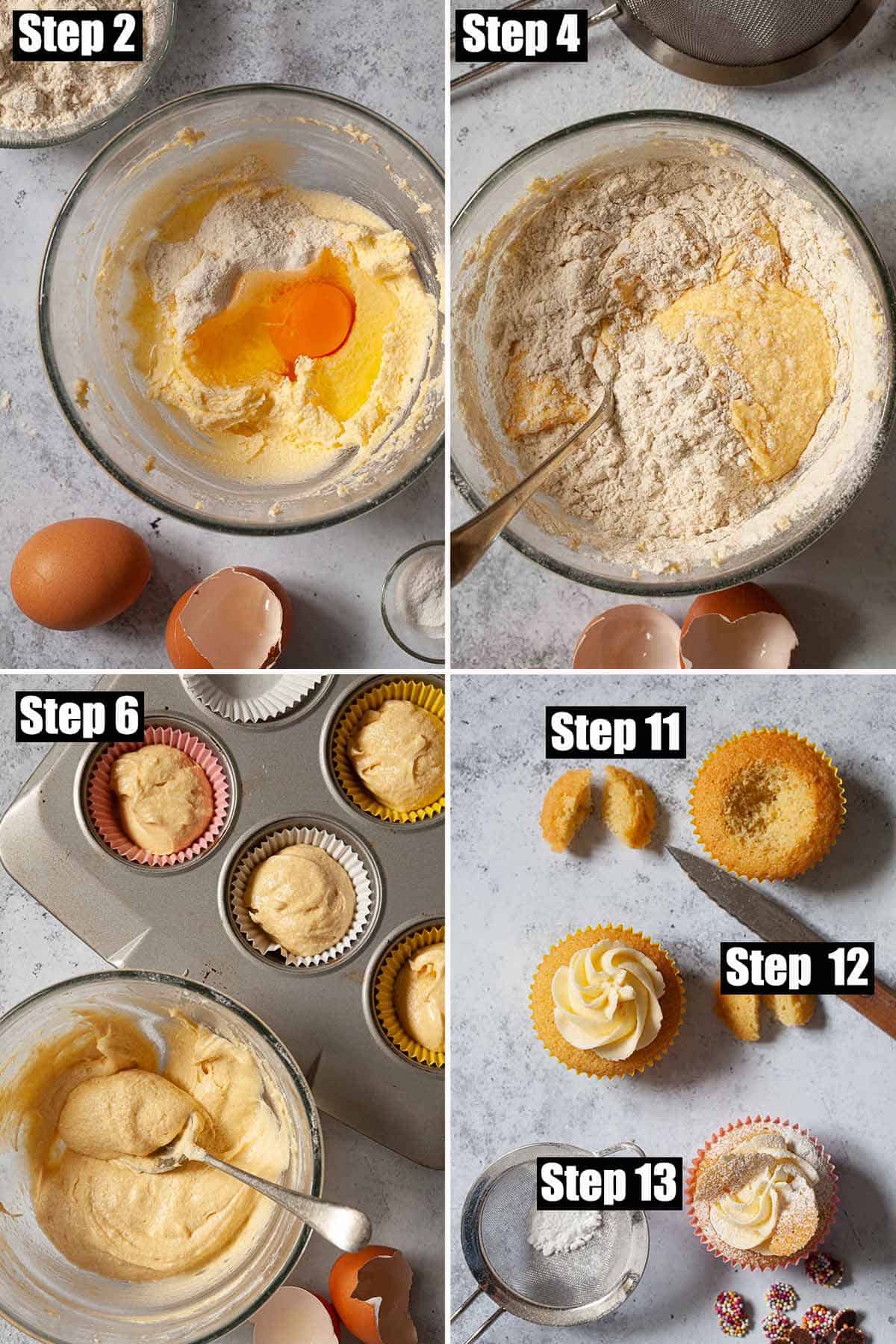
Expert tips
- I recommend using grams and digital kitchen scales when baking cakes as this is the best way to ensure that the ingredients are measured accurately. The cup system is a hugely inaccurate method for measuring and I don’t recommend it.
- Make sure you use small paper cases to make your butterfly buns in rather than cases designed for cupcakes. Cupcake cases are much bigger so you’ll get far fewer cakes if you use those (around 6).
- Put the paper cases into the bun tins before baking begins. Once the batter has been mixed the raising agent (baking powder) is activated, so getting the cakes into the oven as soon as possible is the best course of action to ensure you get light and fluffy buns.
- Use a small sharp serrated kitchen knife to cut the circle from the sponge cake.
- Hold the knife at a 45-degree angle to avoid cutting too deeply into the cake.
- Pipe rosettes of buttercream or cream into the holes for a neat finish.
Frequently asked questions
Yes, you can freeze them. If you intend to do so, opt for a buttercream filling rather than fresh cream as it fairs better in the freezer. Leave any additional adornments, such as sweets, sprinkles or icing sugar off and add these once defrosted.
Open freeze them, then drop the butterfly buns into a freezer bag, ready for pulling out when required. Let defrost at room temperature for 1-2 hours before proceeding to decorate.
It’s the same recipe, but the presentation is entirely different.
Fairy cakes are incredibly simple. They are essentially small cakes that are typically topped with water icing and decorated with sweets or sprinkles.
Butterfly cakes are dressed up to resemble butterflies and are typically filled with buttercream or cream and sometimes jam too. Further decoration is optional but not strictly necessary.
Of course, but remember that cupcakes are about twice the size of fairy cakes and butterfly cakes, so you’ll need to double the recipe to get 12 butterfly cupcakes.
As they are considerably bigger they won’t look quite so alluringly dainty.
Ideas for decoration
There are a few options when it comes to decorating butterfly buns:
- Keep with tradition and fill your cakes with a swirl of vanilla buttercream. This is the obvious way to go if making vanilla cakes.
- But you can also add a small amount of jam – try piping some seedless raspberry or strawberry jam between the wings or some lemon curd (make sure your jam is not too runny or it might just slide off).
- Go for a contrasting flavour with the buttercream. If you’ve made vanilla butterfly cakes opt for chocolate buttercream. Similarly, if you’ve made chocolate butterfly buns fill them with vanilla buttercream. The opposing colours and flavours works out well.
- For those who find buttercream just too sweet for their tastes, try filling that cake hole with a swirl of whipped cream. I’d say definitely include a drizzle of jam in this instance.
- Once the cakes are ready consider adding a final flourish of decoration using sweets or sprinkles. Mini Smarties or Jelly Tots work a treat for kids (though the latter worked even better before Rowntrees suddenly make this sweet larger – where was the logic?)
- Tiny chocolate drops covered in sprinkles look great too – find these in the baking aisle.
- Alternatively, hundreds and thousands add a simple splash of colour.
- If serving butterfly cakes for afternoon tea consider adding crystalised flowers for decoration with sophisticated style.
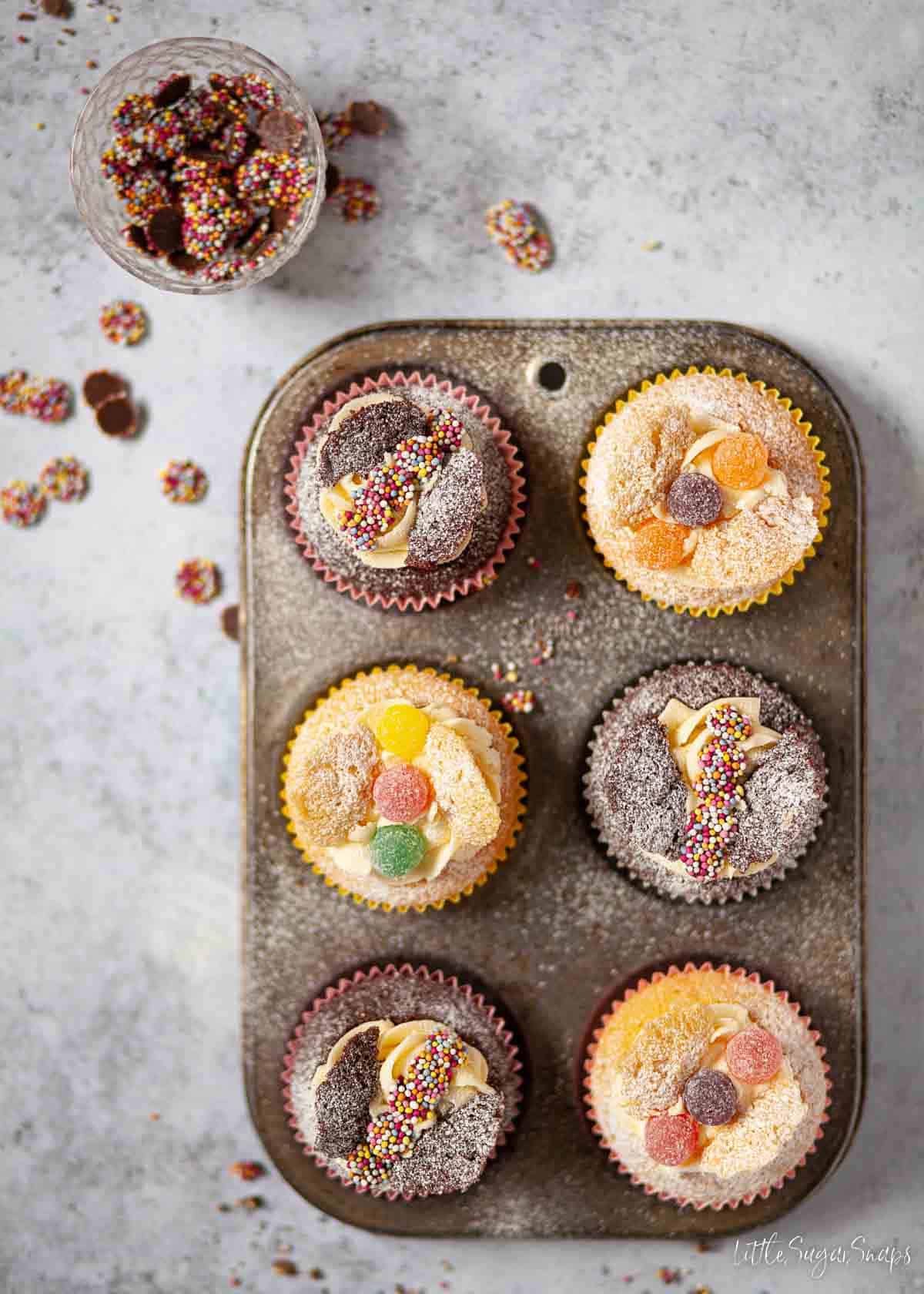
Variations
Chocolate butterfly cakes
It’s very easy to turn these buns into chocolate fairy cakes. Simply replace 30g of the flour with cocoa powder and proceed with the recipe as normal.
As far as the buttercream goes, it’s fine to stick with vanilla, but consider swapping 30g of the icing sugar for 30g of cocoa powder.
Grated chocolate sprinkled between the wings makes a fine garnish in this instance.
Lemon butterfly cakes
To make lemon butterfly cakes just leave the vanilla extract out and mix in the finely grated zest of a lemon instead.
Add a splash of lemon juice (1-2 teaspoons) to the buttercream and consider piping a line of zesty lemon curd down the centre of each bun – zigzigs look great.
Orange butterfly cakes
It’s just as easy to make orange butterfly cakes. Just swap the lemon zest and juice for orange and, if you don’t have orange curd to hand, how about topping your buns with some grated chocolate orange?
Vegan butterfly cakes
If you need to make vegan butterfly cakes adapt this recipe for vegan cupcakes the following way:
- Leave the elderflower cordial out of the recipe. Replace with 2 teaspoons vanilla extract and an extra tablespoon of almond milk.
- Use the batter to fill 20-24 small bun cases. Remember – butterfly cakes are around half the size of cupcakes, so the recipe will make a lot.
- Bake at 180C/ 350F/ Gm6 for around 15-18 minutes until a cocktail pick inserted into the centre comes out clean.
- Make the vegan buttercream – you might not use it all up but the leftovers will store well in the fridge for several weeks.
- Ignore the instructions to make the vegan lemon curd unless you would like to use this as part of your decoration.
- Once the cakes are baked, proceed to cut and decorate them as instructed previously, ensuring all additional decorations are suited to a vegan diet.
Have you made these simple butterfly cakes? How did you decorate yours? If you’re on instagram tag me @jane_littlesugarsnaps so I can see. And don’t forget to leave a comment or rating – I always love to hear how readers get along with my recipes.
New here? Why not sign up to receive LittleSugarSnaps newsletters. You’ll hear first-hand when new recipes are published. You’re welcome to stay in touch on Facebook, Instagram and Pinterest too.
📖 Recipe
Want to Save This Recipe?
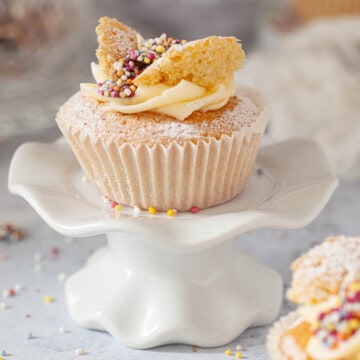
Butterfly Cakes
Equipment
- 12 hole bun tins
- 12-15 Paper fairy cake cases
Ingredients
For the Cakes
- 110 g Butter or baking margarine soft, room temperature
- 110 g Caster sugar
- 2 Eggs large, free-range
- 110 g Plain flour
- 1 teaspoon Baking powder
- 1 teaspoon Vanilla extract
For the Buttercream
- 125 g Butter soft, room temperature
- 250 g Icing sugar
- 1 teaspoon Vanilla extract
Optional Extras
- 1 tablespoon Seedless jam raspberry or strawberry
- Sprinkles
- Small sweets e.g Jelly Tots or mini Smarties
Instructions
Make the cakes
- Preheat the oven to 180C/ 350F/ GM 6 and put the paper cases into the 12-hole bun tins.
- Use electric beaters to cream the butter and sugar together until pale and fluffy.
- Add the vanilla (if using), 1 egg and a spoonful of flour. Beat well.
- Beat in the second egg.
- Sieve the remaining flour and baking powder into the bowl and beat until just combined. The batter should have a soft dropping consistency. If it is too thick add ½-1 tablespoon of milk to loosen it.
- Divide the batter between the paper cases. Fill 12 first and then use any leftover batter to create a few extras (the exact number of cakes made depends on the size of the paper cases used).
- Bake for 15-18 minutes until well risen and golden. Lift the paper cases out of the bun tin and let cool on a wire rack.
Make the buttercream
- Beat the butter with the vanilla extract until soft and smooth.
- Sieve the icing sugar then add a spoonful at a time into the butter, beating well between each addition.
Assembling the cakes
- When cold, cut a shallow circle from the top of each cake leaving a small border around the edge. Use a small serrated knife held at a 45-degree angle to do this.
- Cut the removed piece of cake in half.
- Put the buttercream into a piping bag fitted with a wide nozzle suitable for piping rosettes. Fill the holes cut into the cakes with buttercream.
- Poke the two small pieces of cake into the buttercream to resemble butterfly wings.
- Optional: press sweets and cake decorations into the buttercream.
- Dredge with a little icing sugar just before serving.
Notes
- I recommend using grams and digital kitchen scales when baking cakes as this is the best way to ensure that the ingredients are measured accurately. The cup system is a hugely inaccurate method for measuring and I don’t recommend it.
- Make sure you use small paper cases to make your butterfly buns in rather than cases designed for cupcakes. Cupcake cases are much bigger so you’ll get far fewer cakes if you use those (around 6).
- Put the paper cases into the bun tins before baking begins. Once the batter has been mixed the raising agent (baking powder) is activated, so getting the cakes into the oven as soon as possible is the best course of action to ensure you get light and fluffy cakes.
- Use a small sharp serrated kitchen knife to cut the circle from the sponge cake.
- Hold the knife at a 45-degree angle to avoid cutting too deeply into the cake.
- Pipe rosettes of buttercream or cream into the holes for a neat finish.

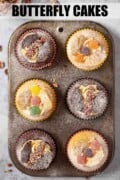
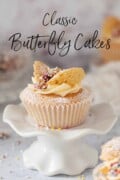
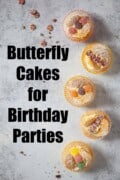
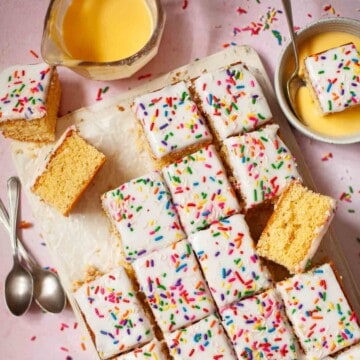
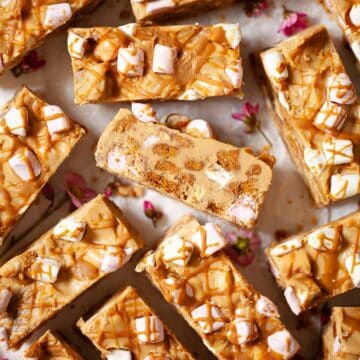
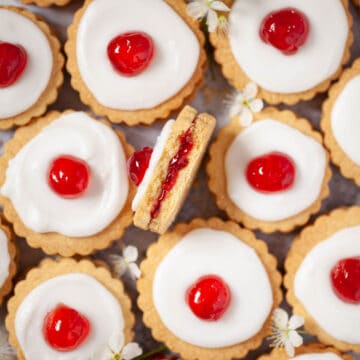
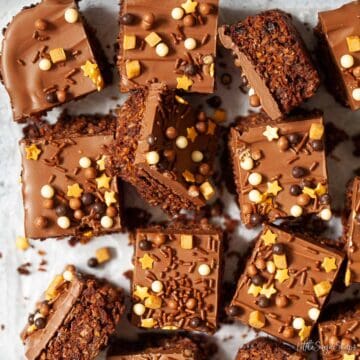
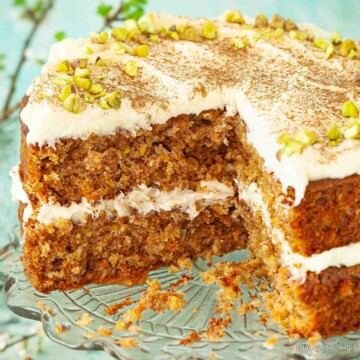
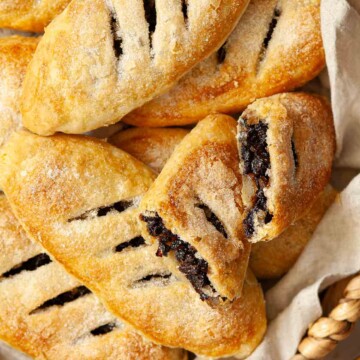
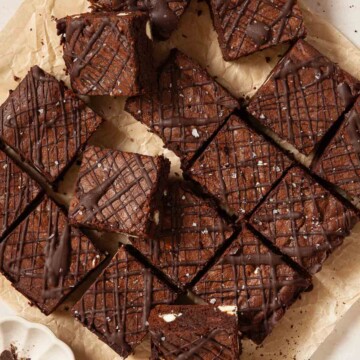
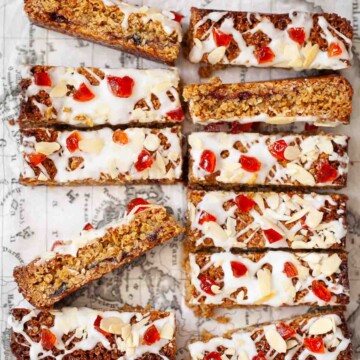
Leave a Reply